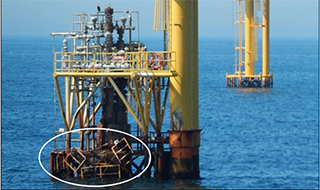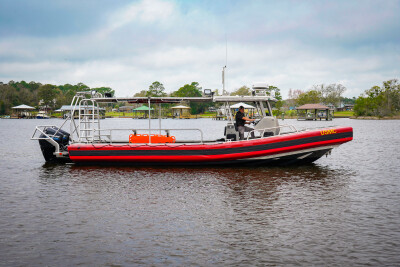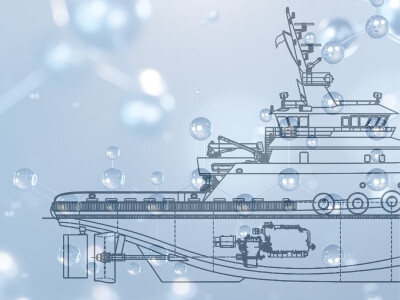A long list of operational failures led to the allision of the offshore supply vessel Tristan Janice with a natural gas production platform in the northern Gulf of Mexico in February 2014, according to a recently released report from the National Transportation Safety Board.
With four crewmembers aboard, the 100.5’x26’x4’ Tristan Janice, operated by TRTB Inc., Cut Off, La., entered the open waters of the Gulf shortly before 3 a.m. on Feb. 18, 2014, after failing to obey company orders to stop in Port Fourchon, La., before proceeding to sea.
Shortly after entering Gulf open waters, the mate directed the on-duty deckhand to tie off the starboard engine throttle so it would remain in the full-ahead speed position. Crewmembers later indicated to the Coast Guard that there was a known throttle problem that prevented the starboard engine from maintaining full speed, and that TRTB had tried to fix the issue, but did not have the correct part. NTSB investigators found no log book entry about the throttle problem even though such entries were required by TRTB’s safety management system.
The Tristan Janice proceeded at full-ahead speed — between 8.6 and 9.7 knots — on a southwest course until 6:23 a.m., when it shifted course to west-southwest. When the captain entered the wheelhouse at 6:35 a.m. for a watch change, he found it empty, and he also observed that visibility was poor due to fog.
After spotting the mate on deck, the captain walked aft to talk with him. The two conversed on deck and in the wheelhouse. The mate told the captain he was checking on an engine vibration, but did not mention the tied-off starboard engine throttle. They also discussed log book entries, why the vessel did not stop at Port Fourchon, and operating in fog. They did not discuss whether to post a lookout, and no lookout was posted in spite of the fog. Although the captain and the mate had discussed vessel traffic in the vicinity, they did not discuss oil or gas platforms along the route.
Shortly after 7 a.m., the captain told investigators that he looked up from the radar to see a gas platform about 200 yards ahead. He was unable to slow the vessel, and said that although he tried to avoid the platform by turning the vessel while “throwing it into reverse,” his turn was initially unsuccessful because the vessel was in autopilot and he struggled to disengage it. Although he was able to disengage autopilot within 15-30 seconds, it was not soon enough to avoid the platform. The Tristan Janice allided with Ship Shoal 119 W, which was unmanned at the time, at a speed of 9.3 knots.
The crew did not report the allision to the authorities and proceeded west-northwest toward Freshwater City, La., at 9 knots.
While there were no injuries or resulting water pollution, the allision ruptured the platform’s gas service line, releasing more than 22,000 cu. ft. of natural gas into the atmosphere. Operations at the affected platform and neighboring platforms ceased for 20 days, and approximately $545,000 in damage was done to the vessel and the platform.
During their investigation, NTSB officials found confusion among all crew members as to who the captain of the vessel actually was, with the man designated as “captain” by TRTB claiming he did not believe he held the position of captain. Additionally, the NTSB was unable to find any records indicating that the vessel’s position was being plotted during the voyage.
“Tristan Janice proceeded at full speed in restricted visibility without the following: a proper lookout, a clearly identified person in charge, engines ready to maneuver, and regular monitoring of the vessel’s progress,” the reported noted.
As a result of the above failures, the NTSB assigned probable cause for the incident to the “the poor watchkeeping and operational practices of the captain and the mate to ensure that the vessel was safely navigated, and the vessel owner’s inadequate procedures and oversight of the vessel’s safety management system.”





